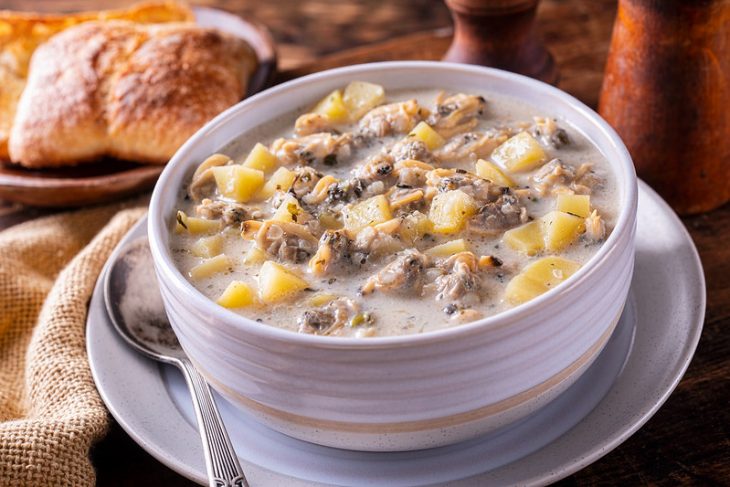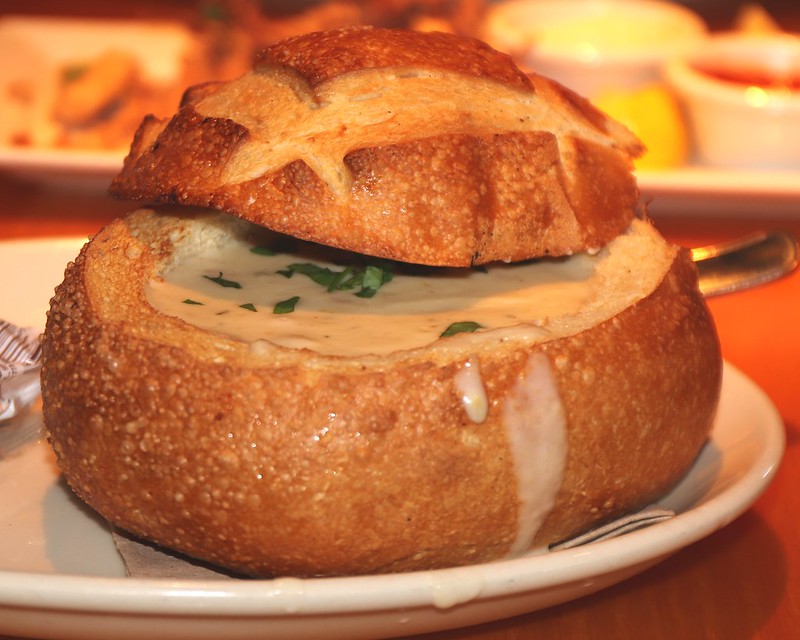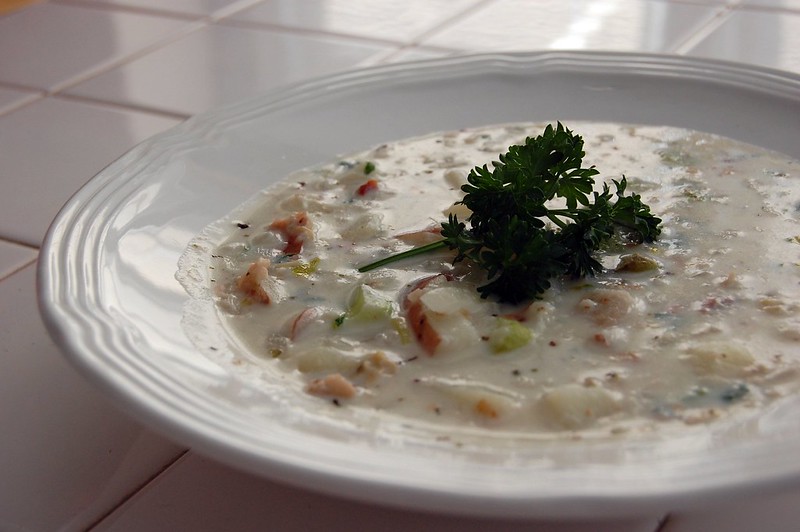
Clam chowder is a classic and beloved dish that has been enjoyed for generations. With its creamy texture, rich flavors, and hearty ingredients, clam chowder has become a comfort food favorite for many. In this comprehensive article, we will dive into the world of clam chowder and uncover its nutrition facts, allowing you to savor this delectable dish while being mindful of its nutritional content.
A Timeless Tradition
Clam chowder has a long history and is deeply rooted in New England cuisine. The dish typically consists of clams, potatoes, onions, celery, and a creamy broth, resulting in a satisfying and comforting meal.
Regional Variations
Clam chowder is not limited to New England alone. Different regions have put their own spin on this classic dish. New England-style clam chowder features a creamy broth, while Manhattan-style clam chowder is characterized by a tomato-based broth. Each variation offers a unique taste experience.

Calories
The calorie content of clam chowder can vary depending on the recipe and serving size. On average, a 1-cup serving of clam chowder contains approximately 200-300 calories.
Protein
Clam chowder is a good source of protein, thanks to the inclusion of clams. A typical serving of clam chowder provides around 10-15 grams of protein, which is essential for muscle repair and overall health.
Carbohydrates
Clam chowder often contains potatoes, which contribute to its carbohydrate content. A 1-cup serving of clam chowder may contain 20-30 grams of carbohydrates. However, it’s worth noting that clam chowder can be modified to fit low-carb diets by reducing the potato content or using alternative ingredients.
Fat
The fat content in clam chowder can vary depending on the recipe and ingredients used. Cream-based clam chowders tend to have a higher fat content, while broth-based varieties may be lower in fat. On average, a serving of clam chowder may contain 10-20 grams of fat.
Sodium
Clam chowder can be moderately high in sodium due to the natural saltiness of clams and any additional salt used in the recipe. A one-cup serving of clam chowder may contain around 600-800 milligrams of sodium. Individuals who need to limit their sodium intake should be mindful of their portion sizes and consider lower-sodium alternatives.
Vitamins and Minerals
Clam chowder is a good source of essential vitamins and minerals. It provides nutrients such as vitamin C, vitamin B12, iron, and potassium, which are vital for overall health and well-being.
Control Portion Sizes
Be mindful of portion sizes when serving clam chowder. Enjoy a reasonable serving that fits within your overall calorie and macronutrient goals.
Opt for Broth-Based Varieties
If you’re looking to reduce the fat content of clam chowder, consider choosing broth-based options over cream-based ones. Broth-based clam chowders are typically lower in calories and fat while still offering a delicious taste.
Add Vegetables
Enhance the nutritional value of clam chowder by adding additional vegetables to the recipe. Incorporate carrots, corn, peas, or spinach to increase the fiber and vitamin content of the dish.

Choose Lean Protein Sources
While clams are already a good source of protein, you can further improve the nutritional profile of clam chowder by including lean protein sources such as white fish or shrimp. This can add variety and increase the overall protein content of the dish.
Experiment with Alternative Ingredients
Explore lighter versions of clam chowder by using alternative ingredients. Consider using reduced-fat dairy or plant-based milk alternatives to create a creamy texture while reducing the fat content.
Conclusion
Clam chowder offers a symphony of flavors and a comforting dining experience. By understanding its nutrition facts and making conscious choices, you can fully enjoy this classic dish while maintaining a balanced diet. Whether you opt for the creamy richness of New England-style clam chowder or the vibrant tanginess of Manhattan-style, let the savory delights of clam chowder warm your heart and captivate your taste buds.
Frequently Asked Questions (FAQs)
Is clam chowder high in sodium?
The sodium content of clam chowder can vary depending on the recipe and ingredients used. Cream-based clam chowders may contain higher sodium levels due to added seasonings and condiments. It’s advisable to check the label or adjust the recipe to control sodium intake if you’re on a low-sodium diet.
Can I make clam chowder gluten-free?
Yes, clam chowder can be made gluten-free by using alternative thickening agents such as cornstarch or gluten-free flour. Additionally, ensure that other ingredients and seasonings used in the recipe are also gluten-free.
Can I freeze clam chowder for later consumption?
Yes, clam chowder can be frozen for future use. However, it’s worth noting that the texture and consistency may slightly change upon thawing. Consider storing clam chowder in airtight containers or freezer bags to maintain its quality.
Can I make a vegetarian or vegan version of clam chowder?
Yes, it is possible to create vegetarian or vegan versions of clam chowder by using plant-based alternatives to clams and dairy products. Replace clams with mushrooms or tofu for a vegetarian version, and use plant-based milk or cream substitutes for a vegan version.
How can I enhance the flavor of clam chowder without adding excessive salt or fat?
To enhance the flavor of clam chowder without relying heavily on salt or fat, consider using herbs and spices such as thyme, parsley, garlic, and black pepper. These additions can bring out the natural flavors of the clams and other ingredients without the need for excessive seasoning.
Was this page helpful?
Our commitment to delivering trustworthy and engaging content is at the heart of what we do. Each fact on our site is contributed by real users like you, bringing a wealth of diverse insights and information. To ensure the highest standards of accuracy and reliability, our dedicated editors meticulously review each submission. This process guarantees that the facts we share are not only fascinating but also credible. Trust in our commitment to quality and authenticity as you explore and learn with us.
